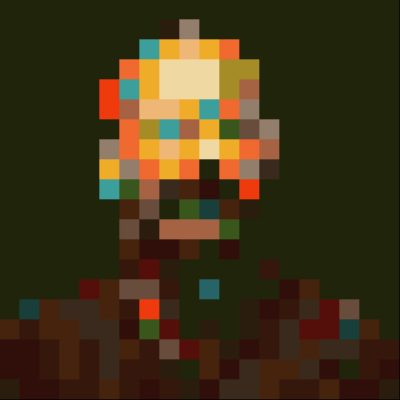You’ve been accepted into the Science and Comics Initiative! Now what?
Omar Khouri
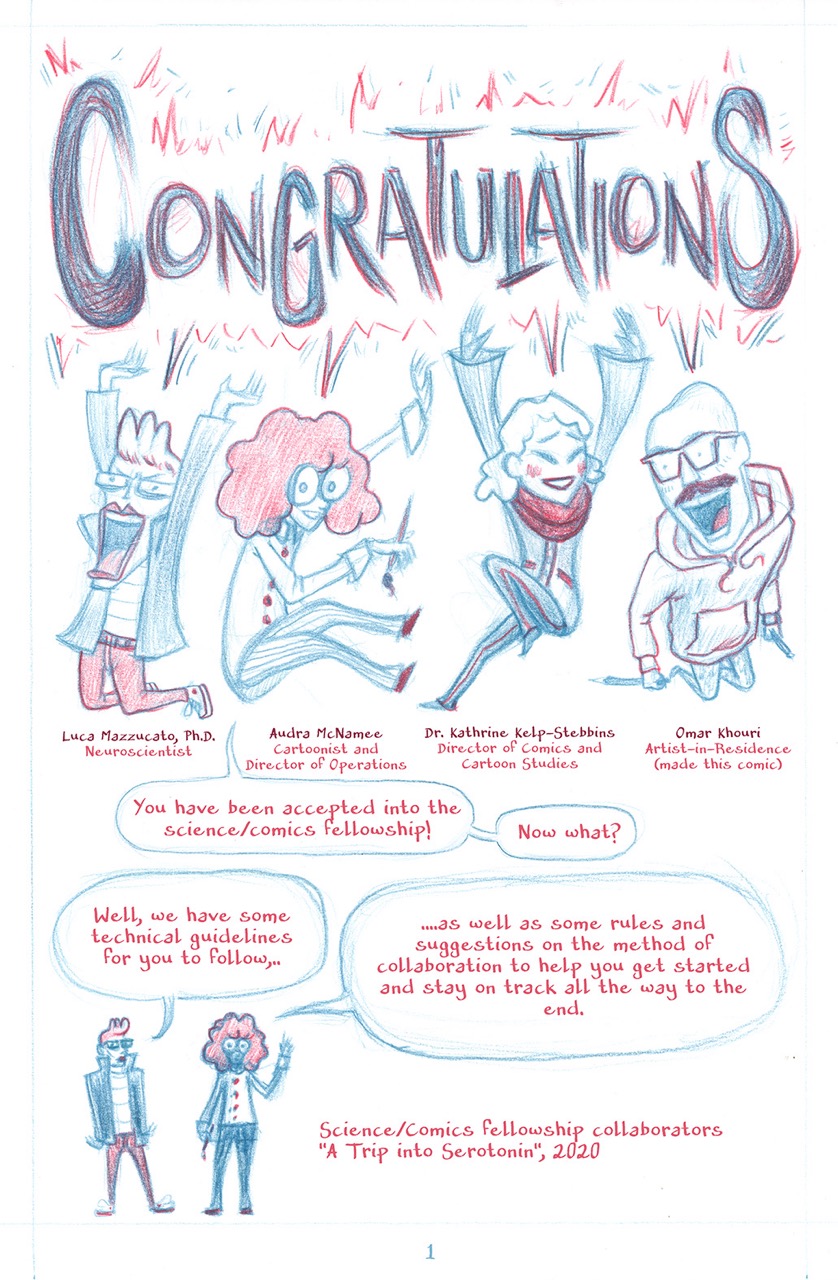
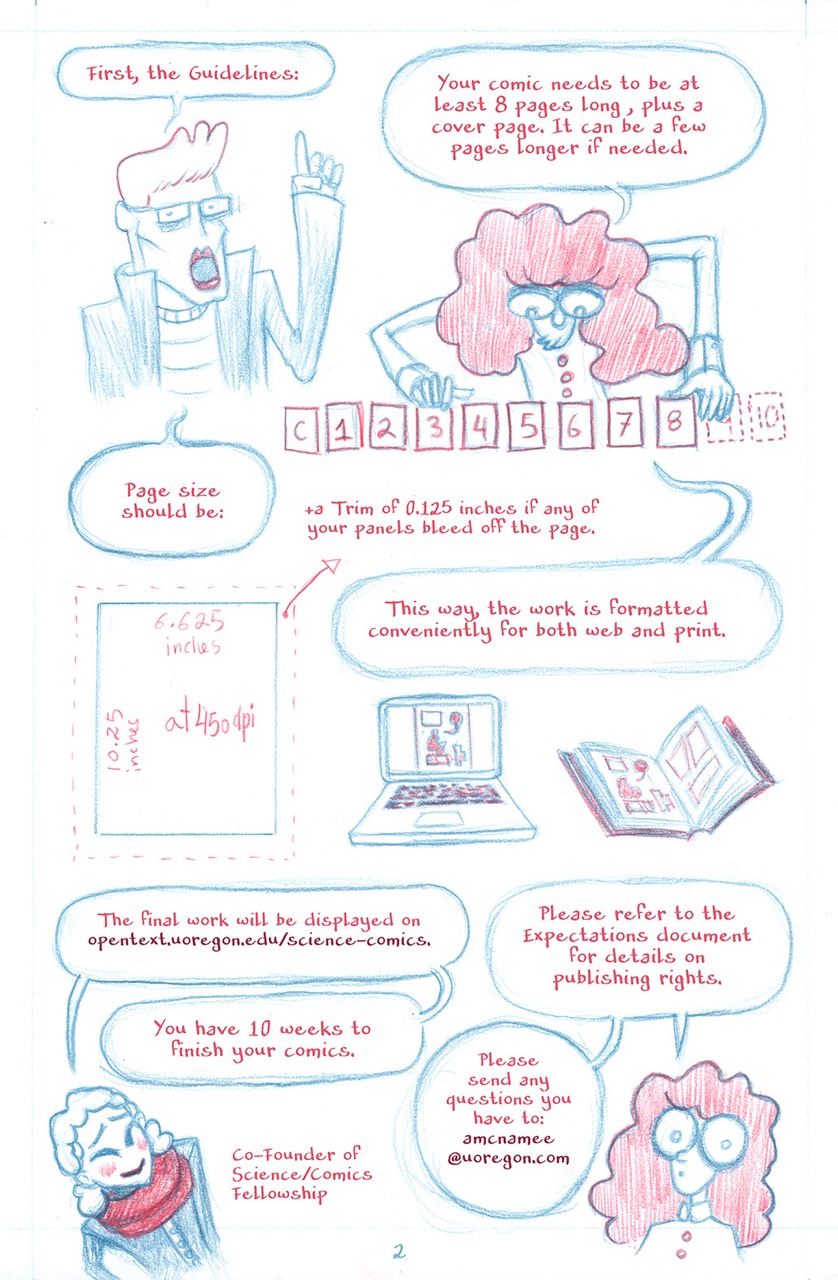
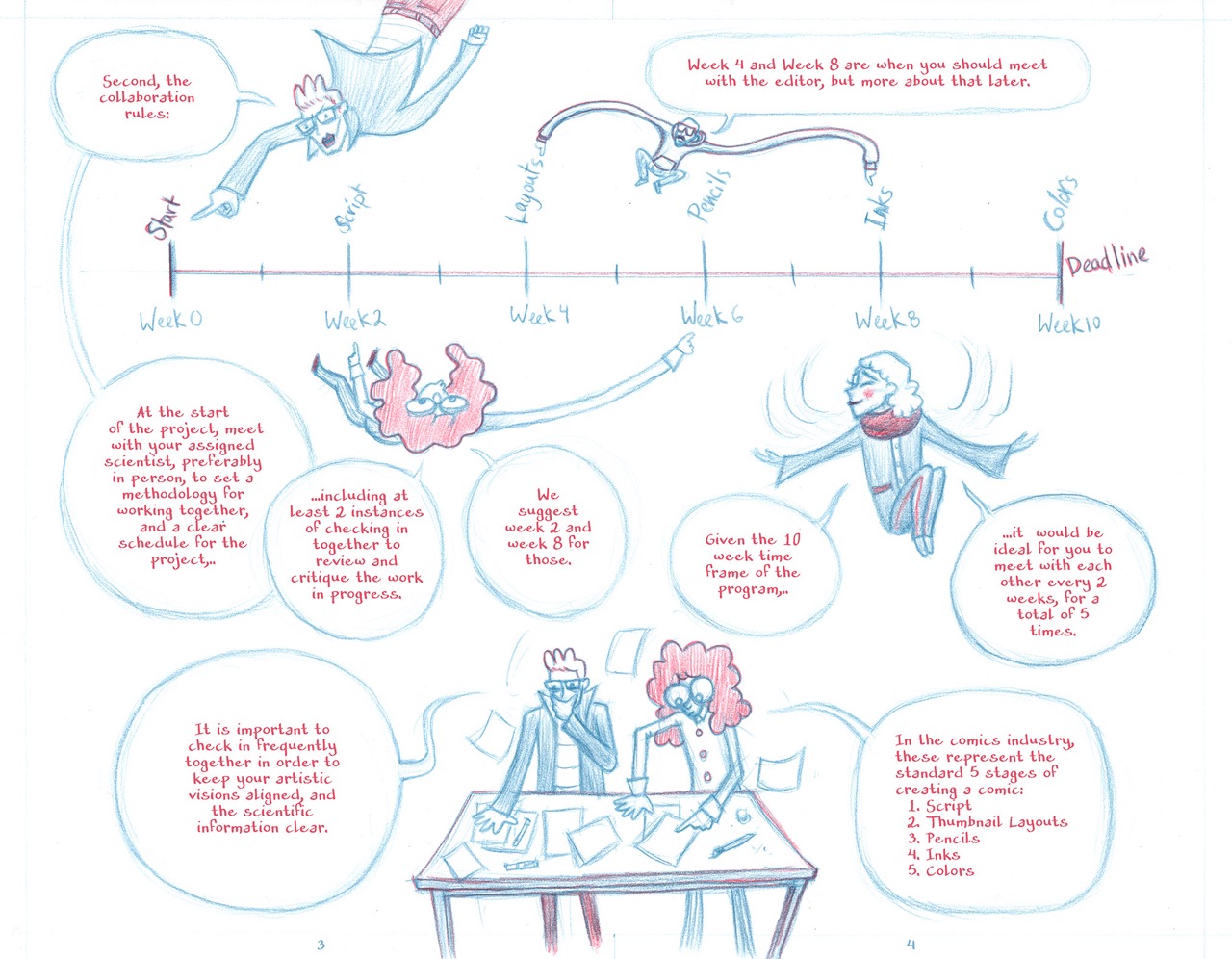
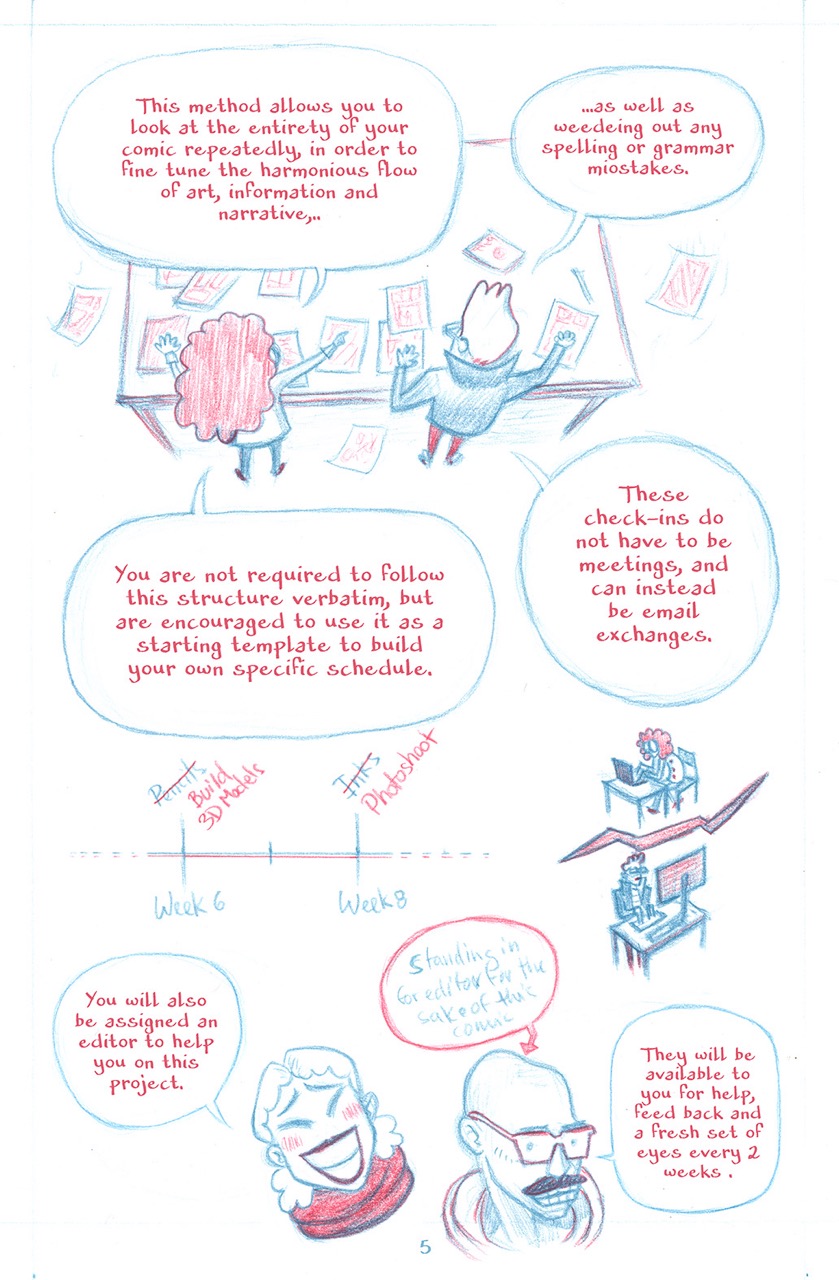
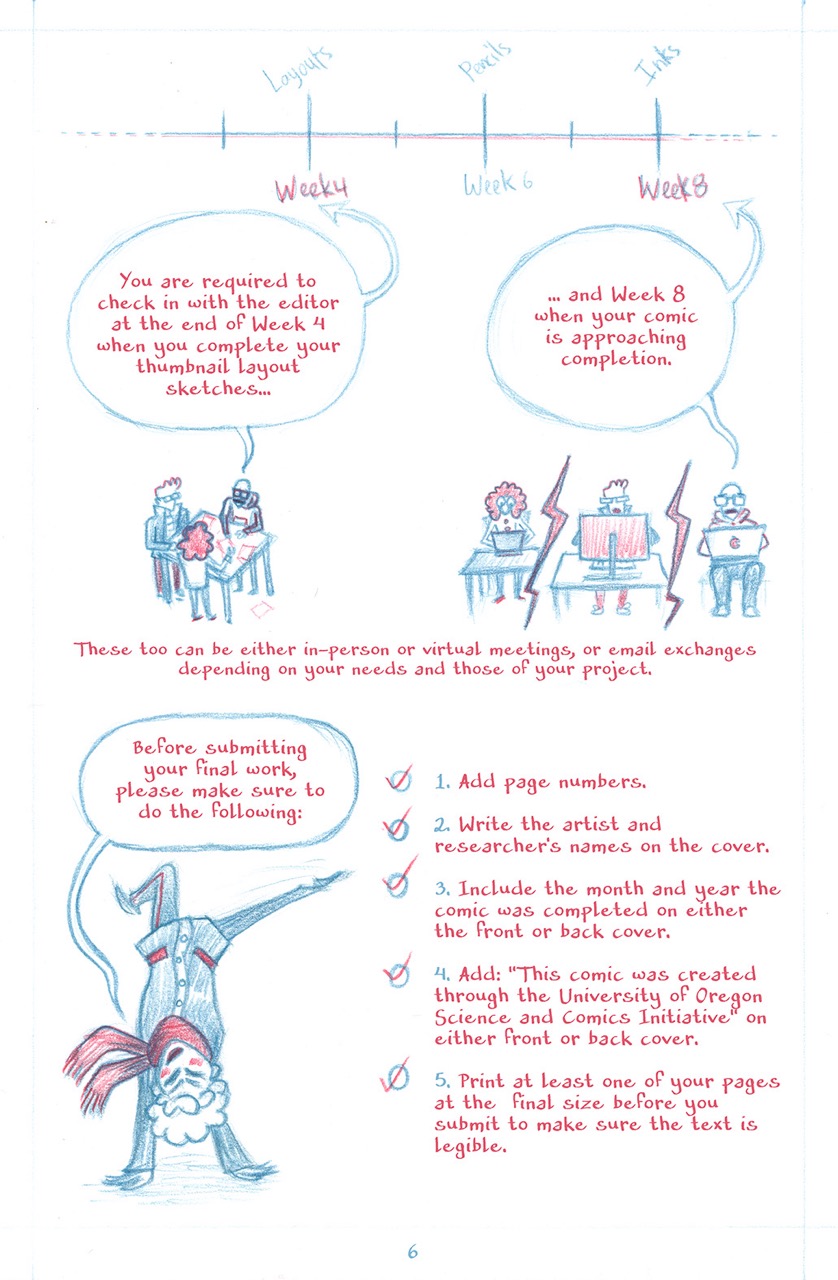
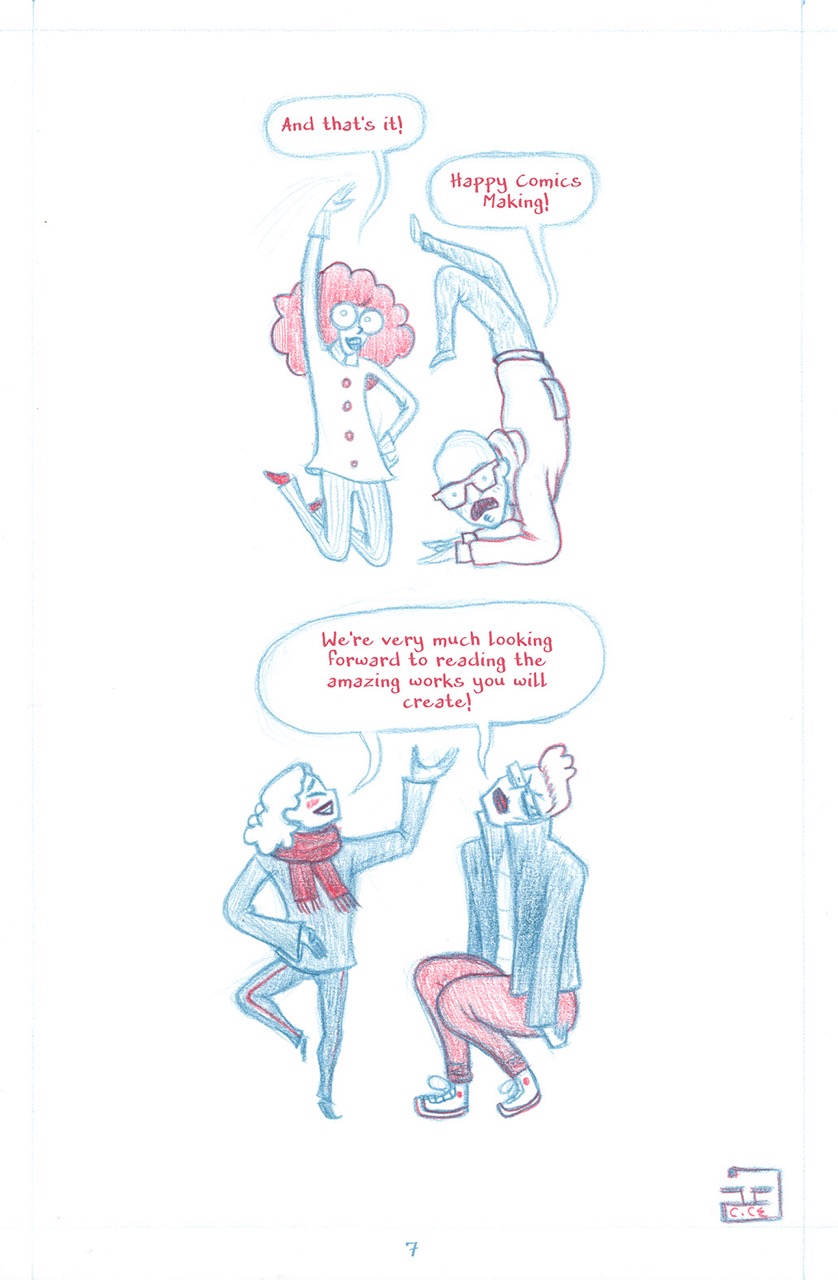
Transcript
Overview
A color pencil comic with a hand drawn, sketchy style and a blue and red color palette. All of the characters are drawn as caricatures with exaggerated faces, and they often have small or elongated limbs.
Page 1
Four cartoon narrators excitedly shout, “Congratulations.” The text is in large, emphasized block letters.
Each narrator is labeled with their name and title. The first narrator is “Luca Mazzucato, Ph.D., Neuroscientist.” Luca has short swoopy hair, a caricature-style exaggerated mouth, and is wearing jeans, Chuck Taylors, and a jacket.
The next narrator is “Audra McNamee, Cartoonist and Director of Operations.” They have big curly hair and round glasses. They’re wearing vertically striped pants and a button-down shirt and holding a paint brush.
The third narrator is “Dr. Katherine Kelp-Stebbins, Director of Comics and Cartoon Studies.” Dr. Kelp-Stebbins is wearing a scarf and a jacket with flared sleeves, she raises her hands excitedly.
The final narrator is “Omar Khouri, Artist-in-Residence (made this comic).” Omar holds pencils in both hands, grinning. He’s wearing a hoodie and glasses and has a thick mustache.
Audra: “You have been accepted into the Science and Comics Initiative! Now what?”
Luca: “Well, we have some technical guidelines for you to follow…”
Audra: “…as well as some rules and suggestions to get your collaboration started and keep it on track all the way to the end.”
Much smaller, full body cartoons of Luca and Audra stand next to each other labeled, “Science/Comics fellowship collaborators ‘A Trip into Serotonin’, 2020.”
Page 2
Luca raises his hand, “First, the Guidelines:”
Audra: “Your comic needs to be at least 8 pages long, plus a cover page. It can be a few pages longer if needed.” Audra looks down at 8 sheets of paper labeled 1 through 8. Two additional pages, 9 and 10, are represented with dotted lines.
Luca: “Page size should be:”
A sheet of paper with labeled dimensions demonstrates the trim settings. The inner page (without the trim margins) is 6.625 inches by 10.25 inches at 450 dpi.
Luca: “plus a trim of 0.125 inches if any of your panels bleed off the page.”
Audra: “This way the work is formatted conveniently for both web and print.”
A comic is displayed on a laptop and a book; it’s well formatted on both.
Dr. Kelp-Stebbins (Co-Founder of Science/Comics Fellowship): “The final work will be displayed on opentext.uoregon.edu/science-comics. You have 10 weeks to finish your comics.”
Audra: “We may print it to hand out at conferences and comics festivals—the Expectations document has details. Please send any questions you have to: amcnamee@uoregon.edu
Pages 3 & 4:
Across both pages runs a 10 week timeline, with every other week marked.
- Week 0: “Start”
- Week 2: “Script”
- Week 4: “Layouts”
- Week 6: “Pencils”
- Week 8: “Inks”
- Week 10: “Colors. Deadline”
Luca flies above the timeline at the top of the page, his jacket billowing like a cape. Pointing to the start of the timeline he says, “Second, the collaboration rules: At the start of the project, meet with your assigned scientist, preferably in person, to set a methodology for working together, and a clear schedule for the project….”
Audra: “Given the 10 week time frame, we recommend you meet with each other at least every two weeks.
Dr. Kelp-Stebbins hovers below the timeline with her arms outstretched, “Many pairs meet every week. You could meet more or less often depending on how your collaboration works.”
Omar crouches above the timeline. His arms are long and exaggerated so he can point at week 4 and 8, “Week 4 and Week 8 are when you should meet with the editor, but more about that later.”
At the bottom of the two page spread Luca and Audra stand behind a desk covered in paper and pencils, rearranging pages and thinking.
Luca: “It is important to check in frequently to keep your artistic visions aligned, and the scientific information clear.”
Audra: “In the comics industry, these represent the standard 5 stages of creating a comic:
- Script
- Thumbnail Layouts
- Pencils
- Inks
- Colors.”
Page 5
At the top of the page, Luca and Audra stand together in front of a desk looking at many sheets of paper with comic panels sketched on them. We see them from behind and above.
Audra: “This method allows you to look at the entirety of your comic repeatedly, in order to fine tune the harmonious flow of art, information and narrative,…”
Luca: “…as well as weedeing [sic, weeding] out any spelling or grammar miostakes [sic, mistakes]”
Audra: “You are not required to follow this structure verbatim, but are encouraged to use it as a starting template to build your own specific schedule.”
Luca: “While in-person check-ins are best, virtual meetings or email exchanges work too.”
A small version of Audra and Luca sit at separate desks looking at their computers, their desks are separated by a red rift showing that they are not actually together.
Weeks 6 through 8 of the timeline from pages 3 and 4 are recreated on this page. Week 6’s label “Pencils” is crossed out and replaced with “Build 3D models” and Week 8’s “Inks” is crossed out and replaced with “Photoshoot.”
Dr. Kelp-Stebbins: “You will also be assigned an editor to help you on this project.”
Omar’s face is labeled “Standing in for editor for the sake of this comic.” Omar: “They will be available to you for help, feedback and a fresh set of eyes every 2 weeks.”
Page 6
An excerpt of the timeline, Week 4 to Week 8, runs across the top of the page.
Omar, Luca and Audra stand around a table looking at pages. Omar: “You are required to check in with the editor at the end of Week 4 when you complete your thumbnail layout sketches…”
Audra, Luca, and Omar are separated by rifts, working on their computers.
“…and Week 8 when your comic is approaching completion. These too can be either in-person or virtual meetings, or email exchanges depending on your needs and those of your project.”
Kate does a cartwheel: “Before submitting your final work, please make sure to do the following:”
- Add page numbers.
- Write the artist and researcher’s names on the cover.
- Include the month and year the comic was completed on either the front or back cover.
- Add: “This comic was created through the University of Oregon Science and Comics Initiative” on either front or back cover.
- Print at least one of your pages at the final size before you submit to make sure the text is legible.
All of the steps in the list have check marks next to them.
Page 7
Audra jumps with one arm over her head, Omar does a shoulder stand with his legs bent. Audra: “And that’s it!” Omar: “ Happy Comics Making!”
Kate stands on one leg, Luca crouches with his head tilted back. Kate and Luca: “We’re very much looking forward to reading the amazing works you will create!

